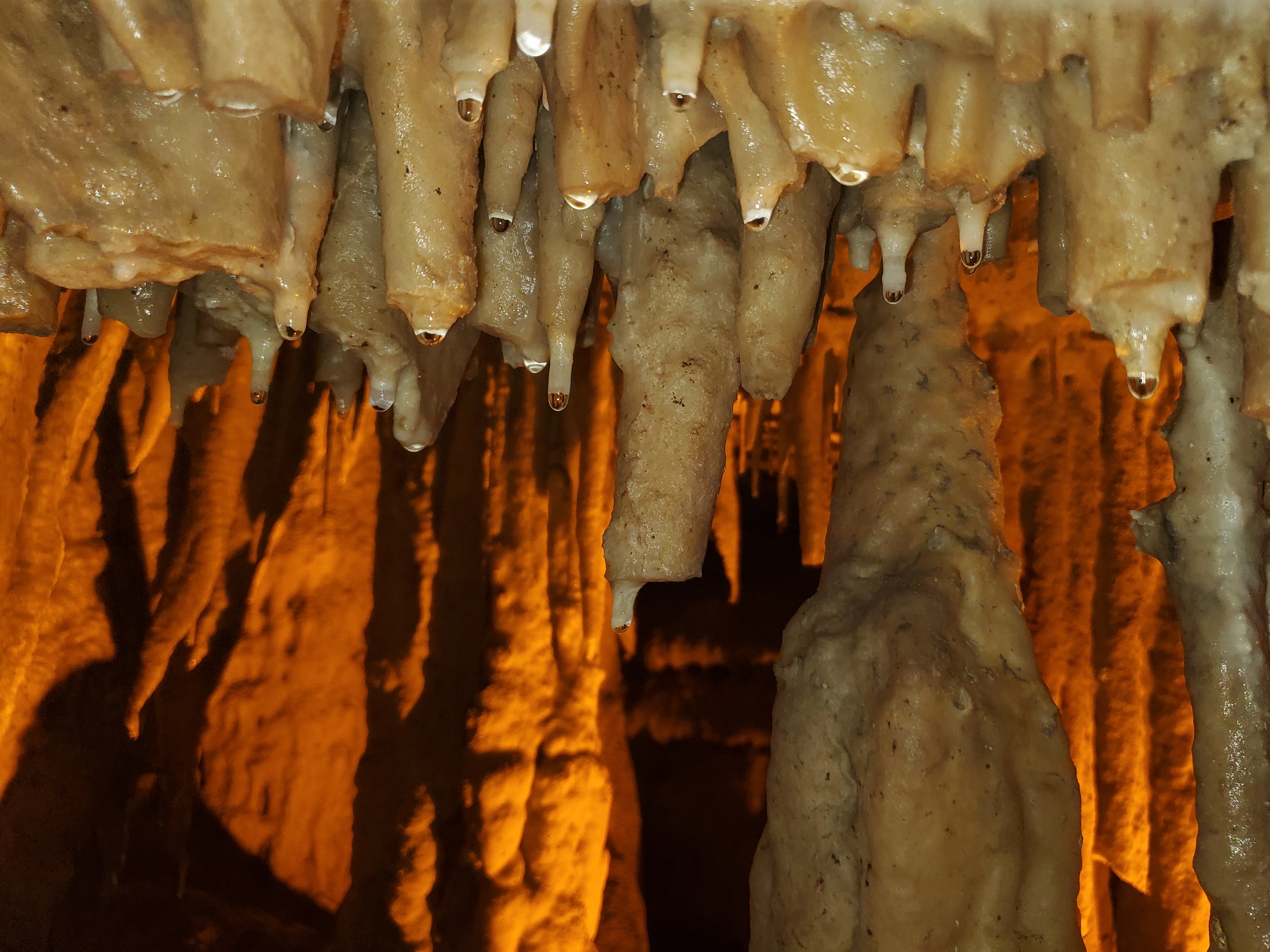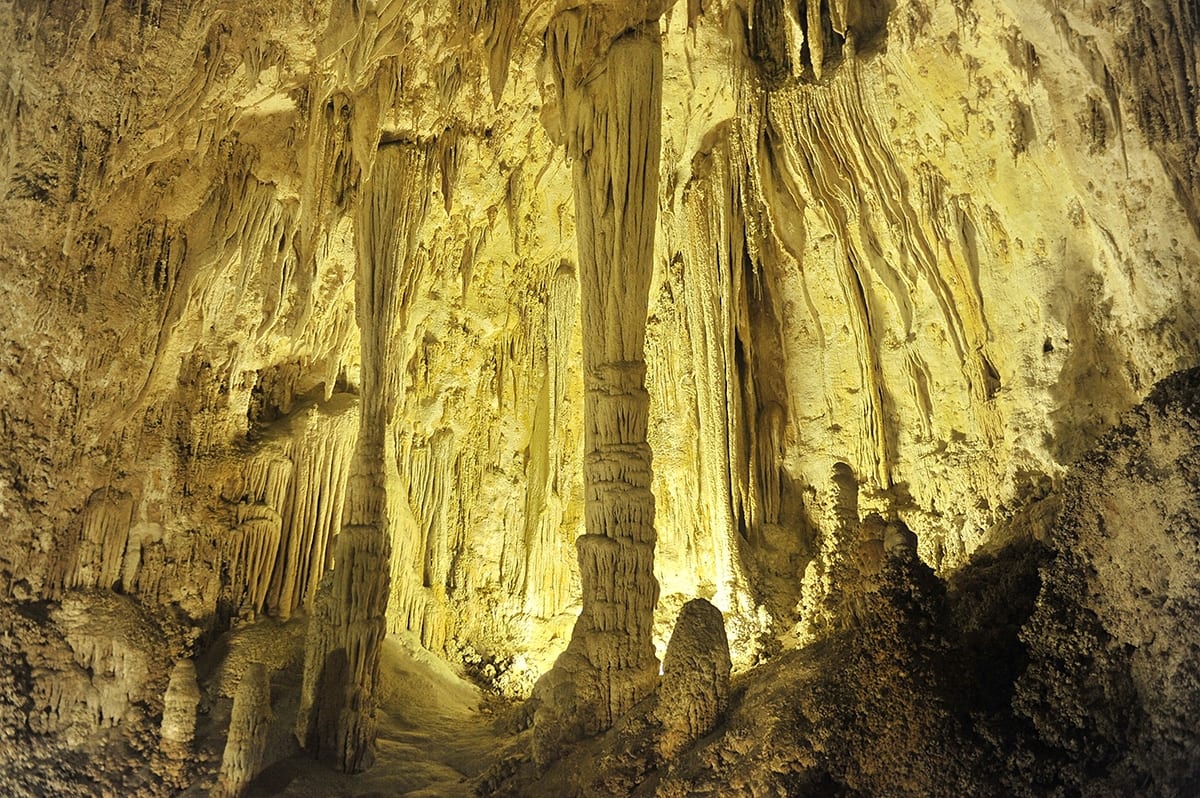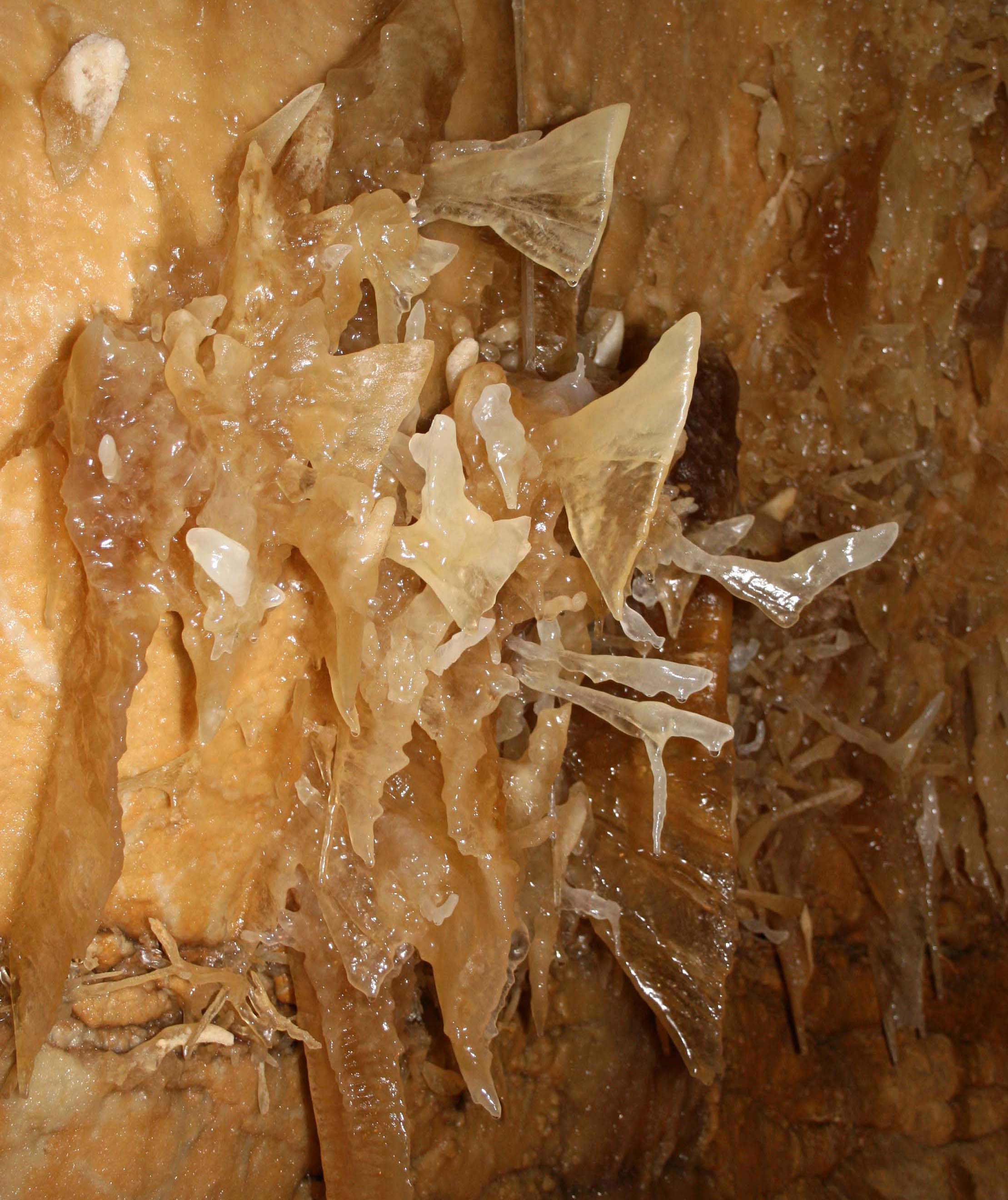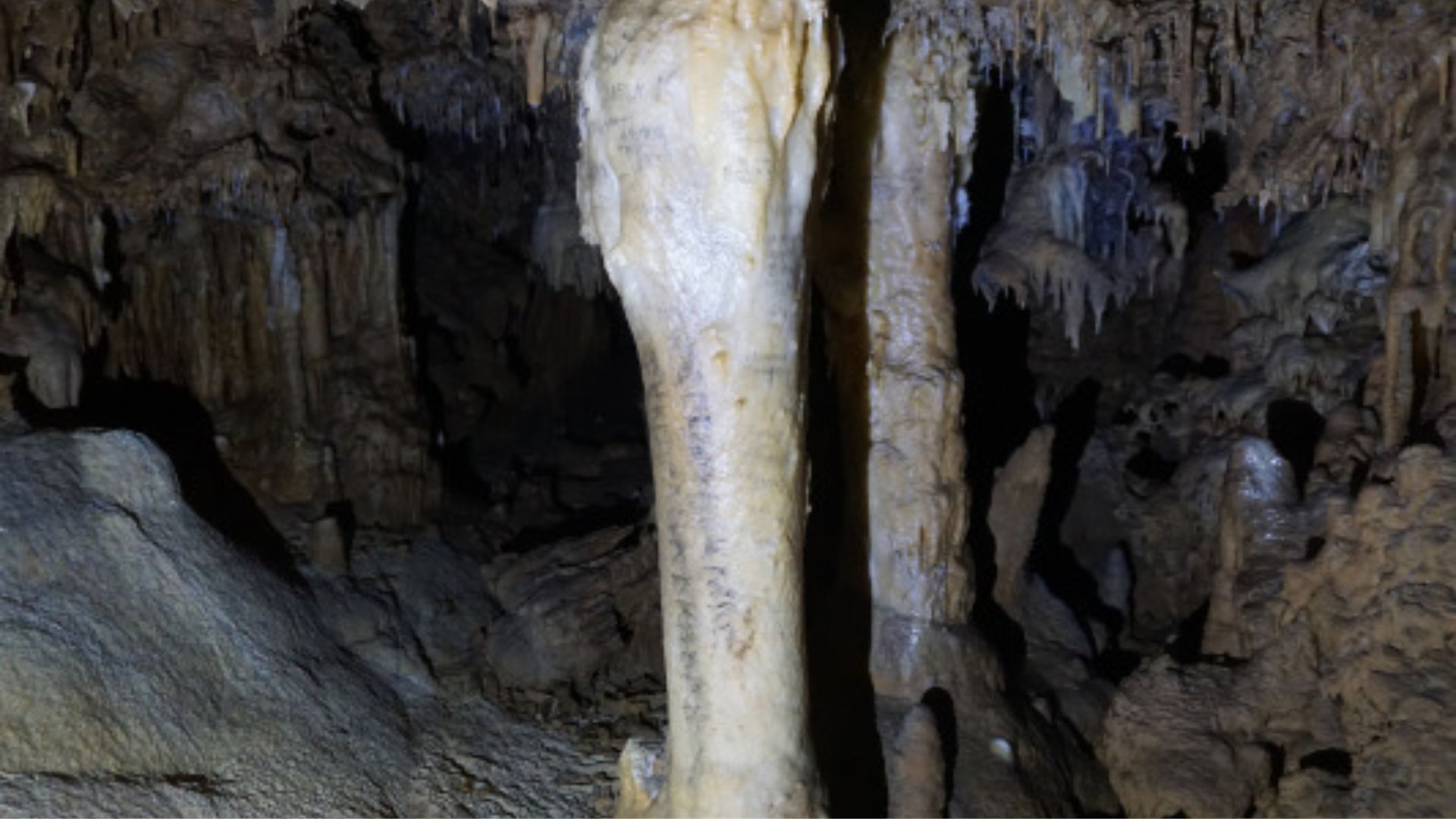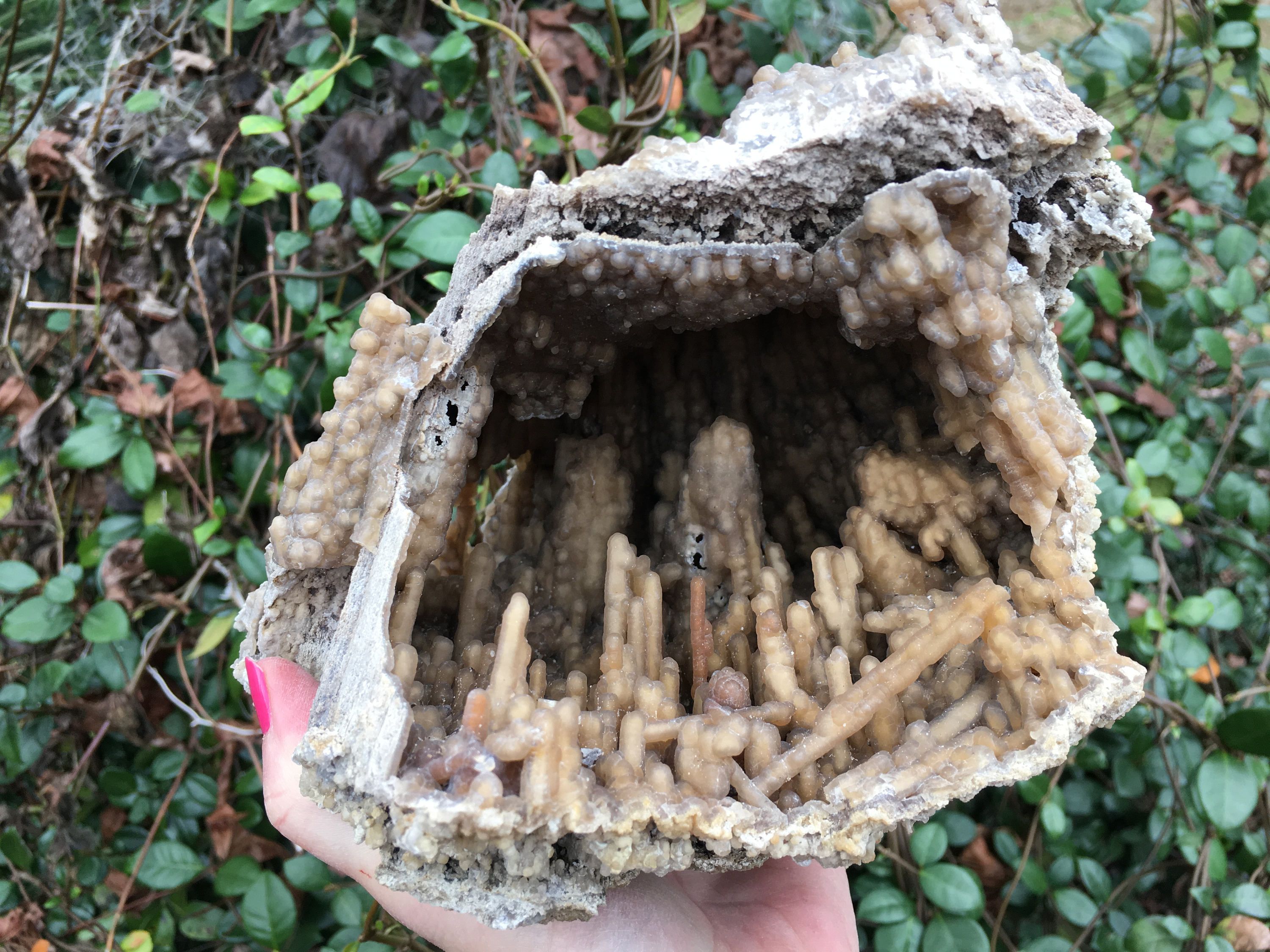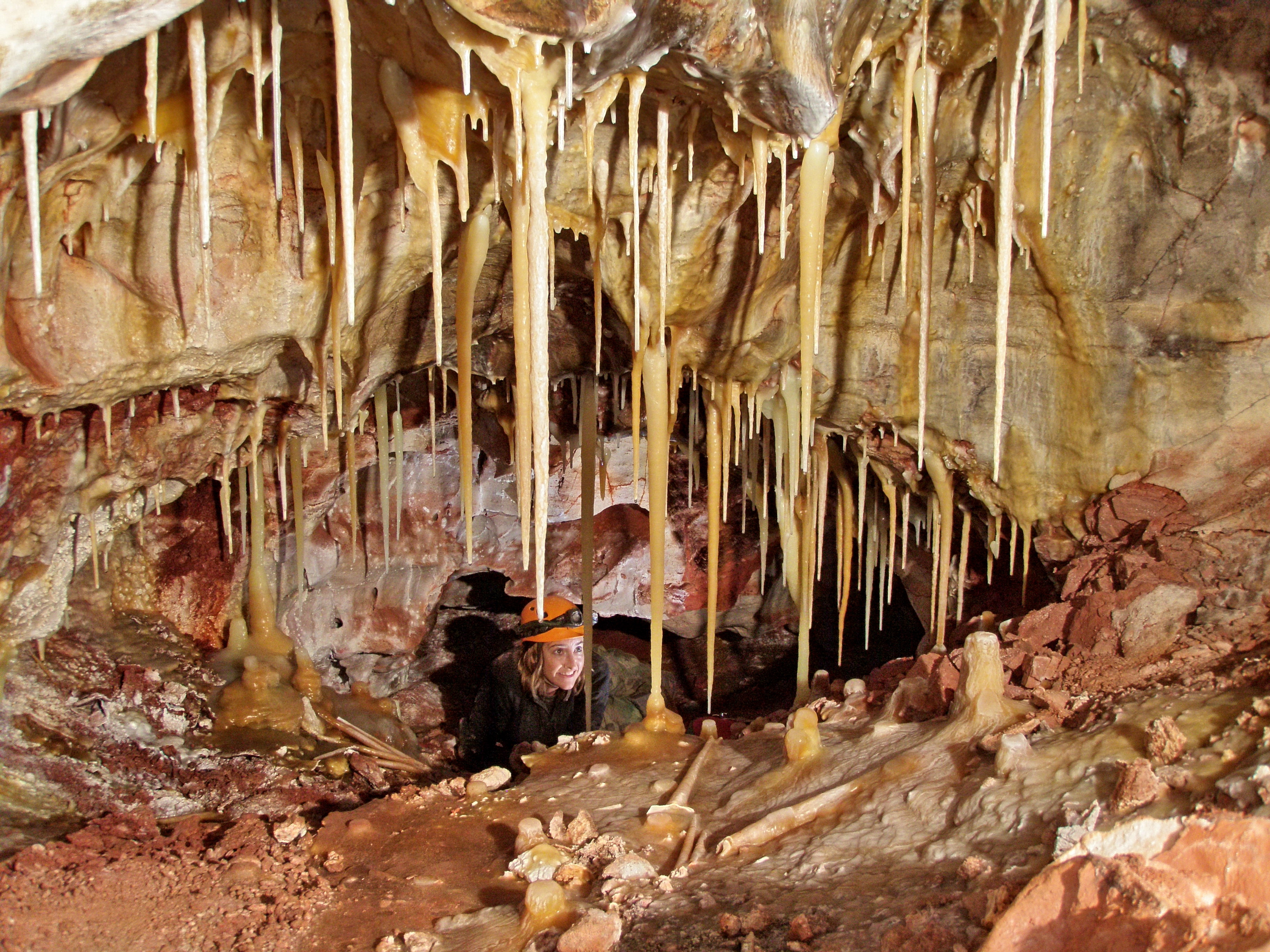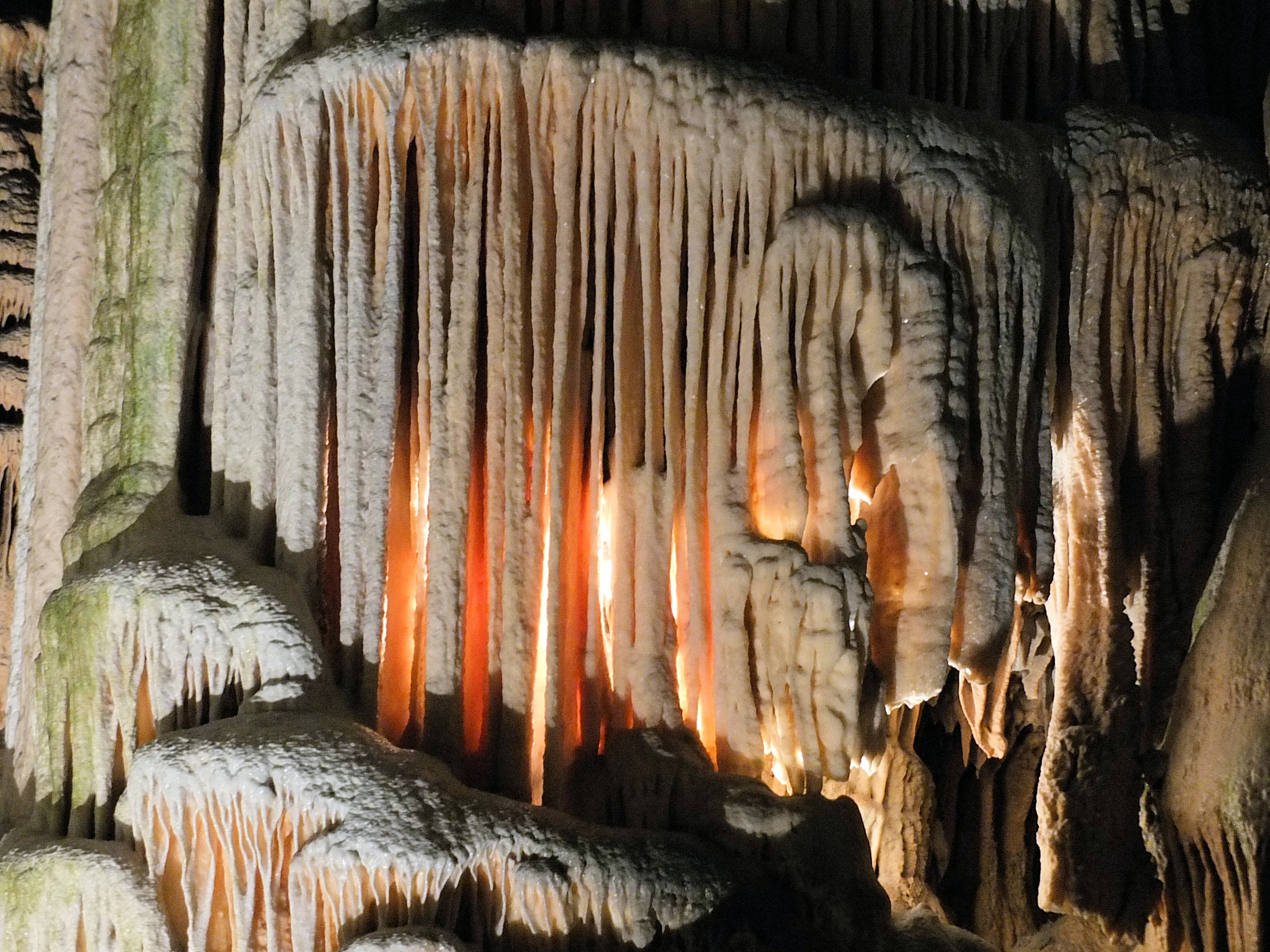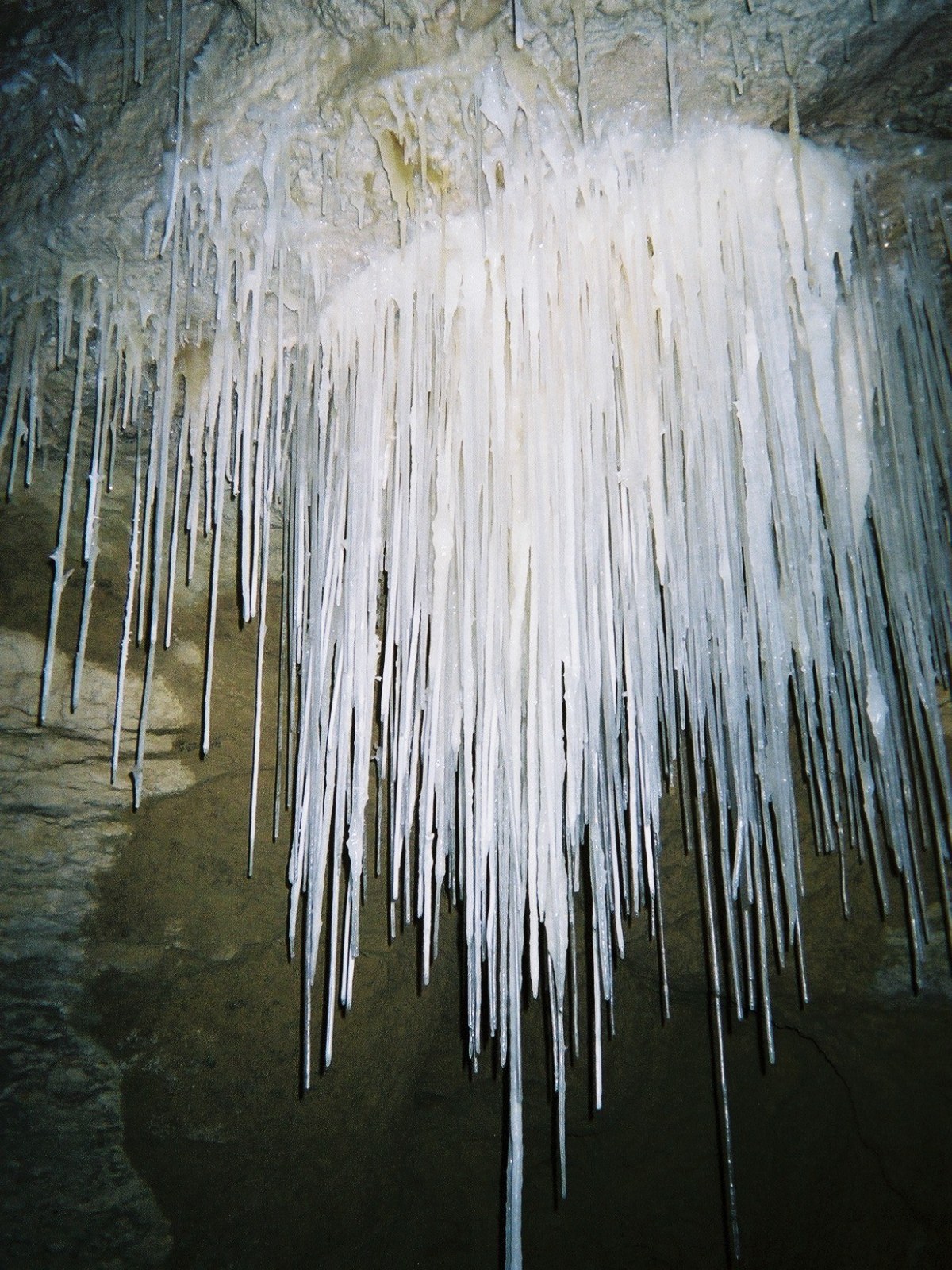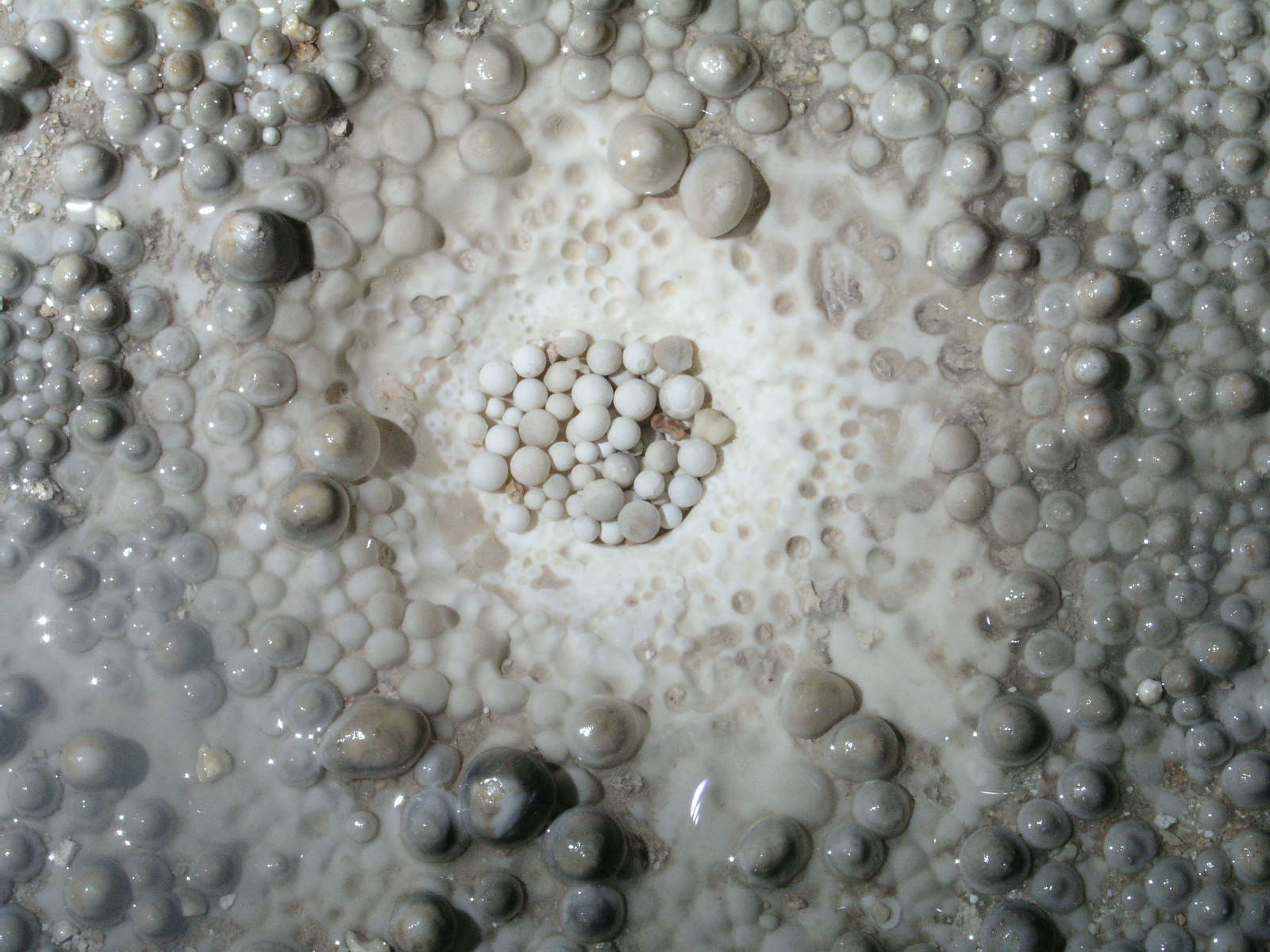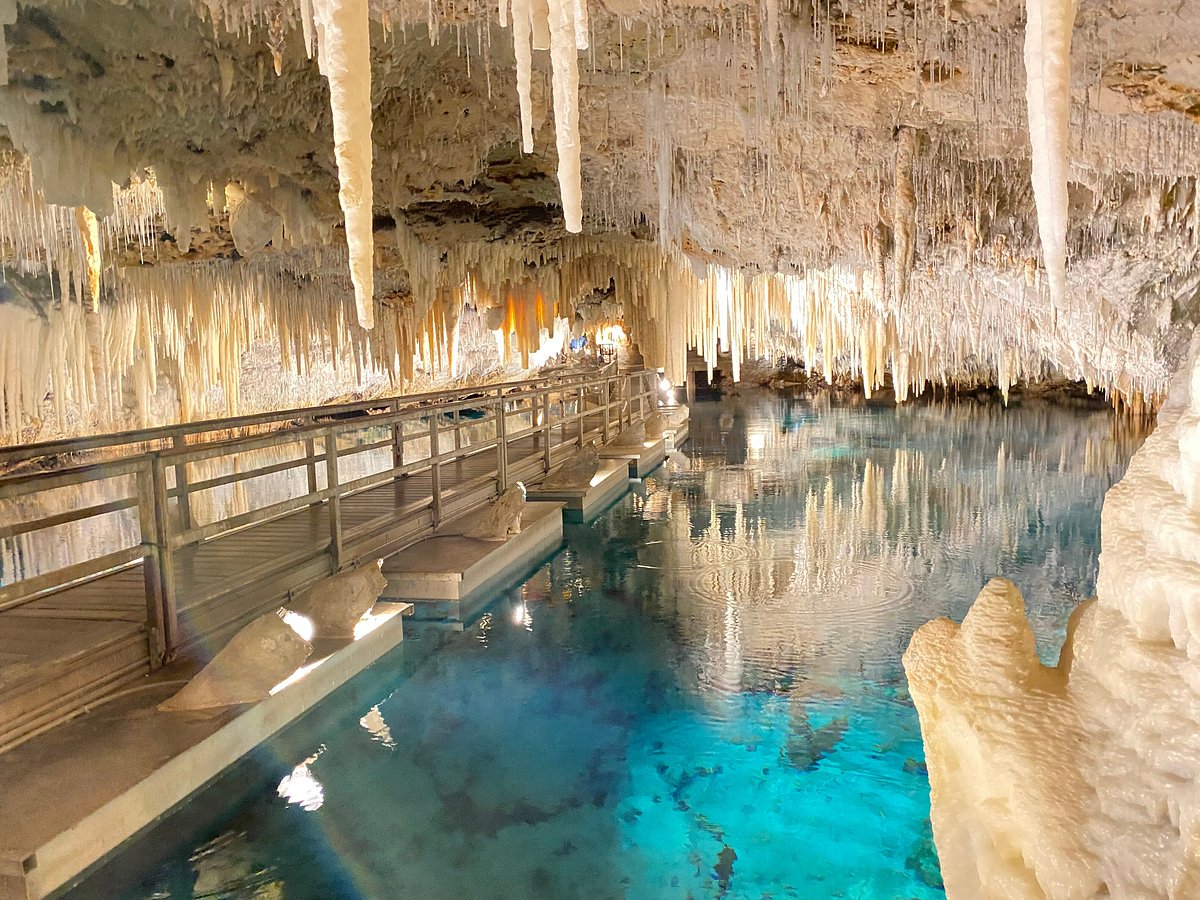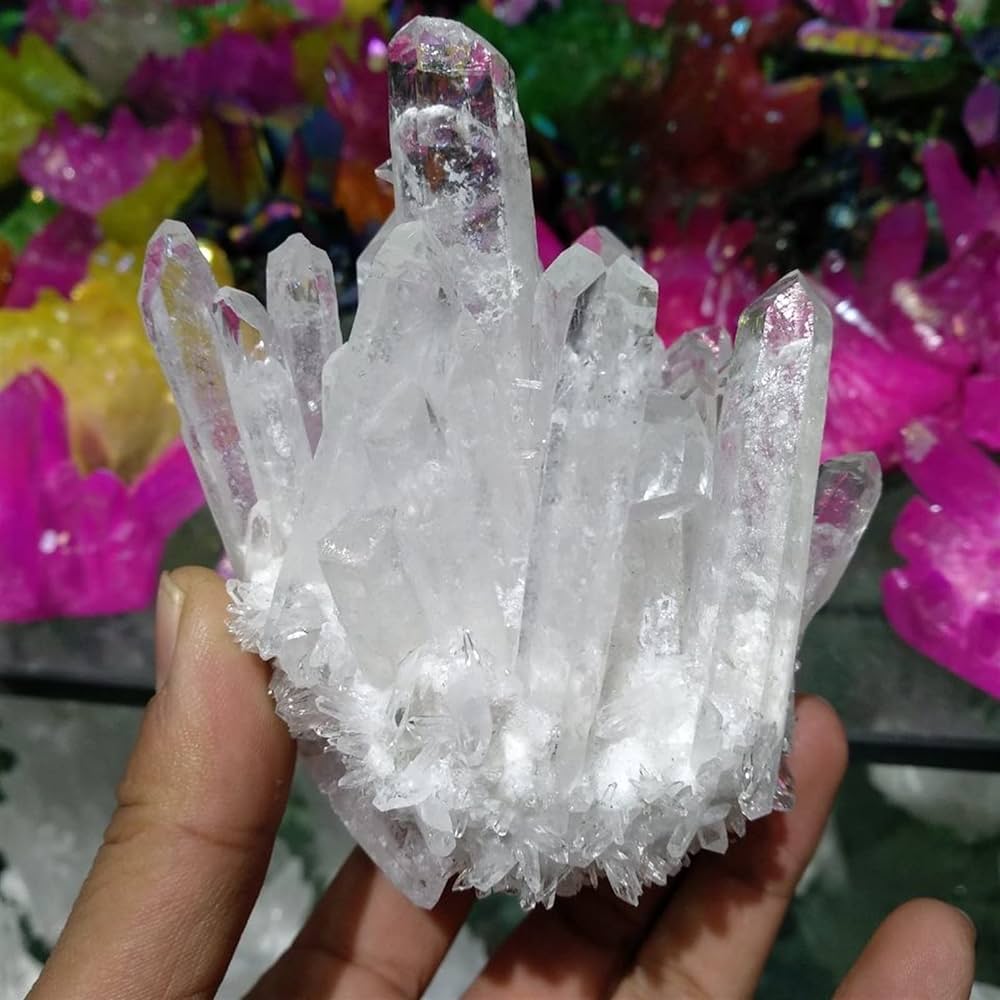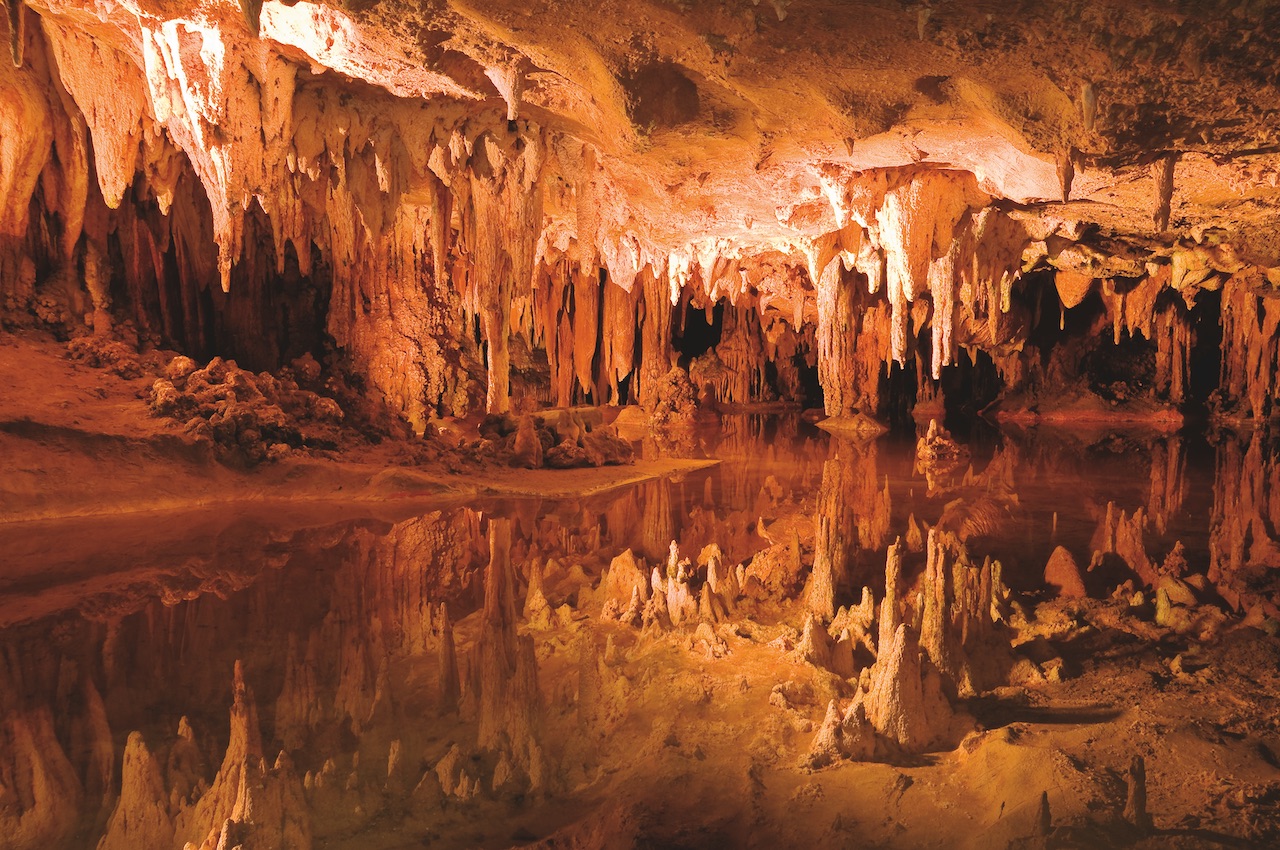
Stalagmite crystals, with their mysterious allure, have captivated the imagination of geologists, adventurers, and curious minds alike. These remarkable natural formations, shaped by the slow passage of time and the dynamic interplay of elements, are a testament to the Earth's geological history. In this article, we embark on a journey to unravel the fascinating world of stalagmite crystals, delving into their formation, diverse characteristics, environmental significance, and much more.
What Is Stalagmite?
The cave feature known as a stalagmite is a sharp pillar that rises from the cave's floor. Exploring caves, often known as spelunking, requires participants to steer clear of stalagmites.
Stalagmites are mineral deposits that have accumulated in thin layers on the cave floor after falling from the ceiling. They are sometimes linked to the dangling stalactites above. Stalactites and stalagmites both derive from the Greek word stalassein, which means "to trickle," since both are formed when droplets of water interact with minerals.
A Brief History Of Stalagmite Crystals
Stalagmite crystals, enigmatic formations found in caves, have intrigued humanity for centuries. Their history is a testament to the curiosity and ingenuity of explorers, scientists, and adventurers who sought to unravel their mysteries.
Ancient Discoveries And Mythical Significance
In ancient times, stalagmite crystals were often shrouded in mysticism and folklore. Early civilizations, such as the Greeks and Romans, believed these formations held mystical powers and revered them as sacred objects. Legends and myths wove stories around stalagmites, attributing them with connections to the gods and the natural world.
The Renaissance Era - Early Scientific Inquiry
During the Renaissance, a surge of scientific curiosity led to a more systematic exploration of caves and their formations. Pioneering naturalists and geologists like Leonardo da Vinci and Athanasius Kircher made early attempts to explain the formation of stalagmites, though their theories were often steeped in allegory and metaphor.
18th And 19th Centuries - The Age Of Enlightenment
The Enlightenment era witnessed a significant leap in our understanding of stalagmite crystals. With the emergence of modern geology as a discipline, scientists like James Hutton and Georges Cuvier laid the groundwork for a more empirical approach. They began to link stalagmites to geological processes, recognizing them as mineral deposits formed over millennia.
20th Century Advancements - Technology Meets Stalagmites
The 20th century they have marked a watershed moment in the study of stalagmite crystals. Advancements in technology, particularly radiometric datingmethods, and sophisticated analytical techniques, allowed scientists to probe deeper into the history and formation of stalagmites. This era saw the birth of speleology as a distinct scientific field dedicated to the study of caves and their buildings.
Stalagmites As Environmental Archives - Late 20th Century To Present
In recent decades, stalagmites have emerged as invaluable archives of Earth's past. Climate scientists, in particular, have turned to these formations to reconstruct ancient climates. By analyzing isotopic ratios and trace element concentrations within stalagmite layers, researchers can unravel a wealth of information about past temperature variations, precipitation patterns, and even shifts in atmospheric composition.
Conservation And Preservation Efforts - Protecting Earth's Geological Heritage
With the rise of tourism and increased human interaction with cave environments, stalagmite preservation has become a critical concern. Conservationists and cave enthusiasts work hand in hand to implement responsible management practices, ensuring that these delicate formations remain intact for future generations to appreciate and study.
The Best Types Of Stalagmite Crystals
Stalagmite crystals come in a remarkable variety of forms, each possessing its own unique beauty and geological significance. Here are eight of the most fascinating types:
Classic Cone-Shaped Stalagmites
Classic cone-shaped stalagmites are among the most iconic stalagmite formations. They form as water drips from the cave ceiling, depositing mineral-rich solutions on the cave floor. Over time, layer upon layer accumulates, creating a conical structure that can range from small, delicate cones to towering columns.
Helictite-Studded Stalagmites
Helictites are intricate and often whimsical formations that appear to defy gravity. They grow in eccentric, twisting patterns and can sometimes be found adorning stalagmites. The exact mechanism behind their growth remains a subject of scientific intrigue.
Columnar Stalagmites
Columnar stalagmites are the result of two or more stalagmites growing together and eventually merging into a single, larger structure. These formations can be imposing, sometimes resembling ancient pillars within the cave environment.
Fossilized Coral Stalagmites
In some caves, stalagmites take on the appearance of fossilized coral due to their branching, reef-like structures. These formations are particularly captivating, as they bear a striking resemblance to underwater coral reefs.
Needle-Like Stalagmites
Needle-like stalagmites are characterized by their slender, pointed shapes. They form under specific conditions where water drips in a manner that promotes vertical growth. These delicate structures can create a mesmerizing visual effect in caves.
Drapery Or Curtain Stalagmites
Drapery stalagmites, also known as curtains, are formed when mineral-rich water flows down an inclined surface, leaving behind thin, sheet-like deposits. These formations can create stunning visual displays resembling flowing fabric.
Soda Straw Stalagmites
Soda straws are thin, hollow stalagmites that form when water drips from the cave ceiling. Over time, mineral deposits accumulate around the dripping water, gradually elongating the structure. They are delicate and can grow to impressive lengths.
Cave Pearls
Cave pearls are unique stalagmite formations that result from water droplets accumulating around a nucleus, such as a grain of sand or a small rock fragment. Over time, layers of calcite build up, creating a spherical structure. They can be found in underground pools or on the cave floor.
Healing Properties Of Stalagmite Crystals
Stalagmite crystals, while not traditionally associated with metaphysical or healing properties like gemstones, are still sometimes believed to possess specific beneficial effects by those who practice crystal healing. It's important to note that these beliefs are not scientifically substantiated, and any potential impacts are subjective and should not be used as a substitute for professional medical advice or treatment. That said, here are some of the purported healing properties associated with stalagmite crystals.
Grounding And Stability
Some believe stalagmite crystals have grounding properties, helping individuals to feel more connected to the Earth and providing a sense of stability. This can be especially useful for people who think scattered or disconnected.
Promoting Patience And Persistence
The slow growth process of stalagmite crystals over thousands of years is sometimes seen as a symbol of patience and persistence. It is believed that being in the presence of these formations can instill these qualities in individuals.
Enhancing Inner Strength
Stalagmite crystals, with their enduring nature, are thought to symbolize strength and resilience. Some people believe that spending time near or meditating with stalagmite formations can help individuals tap into their inner power.
Promoting Emotional Balance
Advocates of crystal healing suggest that being around stalagmite crystals can help balance emotions. It is believed that they can absorb negative energies and provide a sense of calm and tranquility.
Supporting Physical Healing
While not a substitute for professional medical treatment, some people believe that the energy of stalagmite crystals may complement conventional healing practices. They may be used as a tool for relaxation and stressreduction.
Encouraging Reflection And Meditation
The unique and often mesmerizing formations of stalagmites can create a conducive environment for introspection and meditation. Some individuals find that being in the presence of these crystals helps them achieve a state of mental clarity.
Enhancing Spiritual Awareness
Stalagmite crystals are sometimes associated with spiritual growth and inner exploration. It is believed that they can help individuals connect with their higher selves or tap into a more profound sense of spirituality.
Facilitating Transformation
The slow, gradual growth of stalagmites is often seen as a metaphor for personal growth and transformation. Some people use the presence of these formations as a symbol to inspire positive change in their own lives.
Uses Of Stalagmite Crystals
Stalagmite crystals, with their unique formations and geological significance, serve various purposes beyond their aesthetic appeal. Here are some of the critical uses of stalagmite crystals.
Climate Research And Reconstruction
Stalagmites act as natural archives of past climate conditions. By analyzing the layers of minerals within stalagmites, scientists can reconstruct ancient climates. Isotopic ratios and trace element concentrations provide valuable information about temperature variations, precipitation patterns, and atmospheric composition.
Understanding Geological Processes
The growth patterns and compositions of stalagmites can offer insights into geological processes. Studying these formations can help scientists unravel the history of the Earth's surface, including the deposition of sediments, changes in groundwater flow, and even seismic events.
Dating Archaeological Sites
Stalagmites can be used for radiometric dating. By analyzing the radioactive decay of some aspects within the minerals, scientists can determine the age of the stalagmite, which can, in turn, provide a chronological framework for archaeological sites that contain them.
Environmental Monitoring
Stalagmites can serve as indicators of environmental changes. By studying the composition of minerals within stalagmites, researchers can gain insights into shifts in local or regional environments, including changes in vegetation, water sources, and pollution levels.
Speleothem Science And Speleology
Stalagmites are a central focus of speleology, the scientific study of caves. Understanding the formation and characteristics of stalagmites contributes to broader knowledge about cave environments, their evolution, and the organisms that inhabit them.
Education And Scientific Outreach
Stalagmite formations are often featured in educational programs and museums. They serve as captivating tools for teaching about geology, climate science, and Earth's history. Their intriguing shapes and colors make them excellent subjects for public engagement and scientific communication.
Tourism And Recreation
Stalagmite caves are popular tourist attractions around the world. They offer visitors a chance to witness these natural wonders up close, providing not only recreational enjoyment but also an opportunity for educational experiences about Earth's geology.
Conservation And Preservation
The study and appreciation of stalagmite crystals also contribute to efforts to conserve and protect cave environments. Understanding the delicate nature of stalagmites encourages responsible tourism and management practices, ensuring the long-term preservation of these geological wonders.
Scientific Research And Discoveries
Ongoing studies of stalagmites lead to new scientific discoveries. Researchers may uncover novel insights about paleoclimate, hydrology, and geological history that have broader implications for our understanding of Earth's systems and processes.
The Spiritual Significance Of Stalagmite Crystals
Stalagmite crystals hold spiritual significance for various cultures and belief systems around the world. While interpretations may vary, here are some common spiritual meanings and associations attributed to stalagmite crystals:
Grounding And Connection To Earth
Many spiritual traditions view stalagmite crystals as symbols of grounding and connection to the Earth. They are seen as conduits that allow individuals to tap into the stabilizing energies of the natural world.
Timelessness And Patience
The slow and steady growth of stalagmites over thousands of years is often seen as a powerful metaphor for patience, endurance, and the eternal nature of the universe. They are revered as ancient witnesses to the passage of time.
Transformation And Growth
Stalagmite formations are sometimes regarded as symbols of personal and spiritual growth. Their gradual formation is likened to the journey of self-discovery, with each layer representing a new phase in one's spiritual evolution.
Wisdom And Ancient Knowledge
Due to their age and the ancient geological processes that formed them, stalagmite crystals are often associated with accumulated wisdom and ancient knowledge. They are believed to hold the energy of the Earth's deep history.
Meditation And Inner Exploration
The unique and often mesmerizing formations of stalagmites provide an ideal setting for meditation and introspection. They are considered powerful aids in achieving states of deep reflection and connecting with one's inner self.
Harmonizing Energies
Stalagmite crystals are thought by some to possess harmonizing energies that can help balance and align the spiritual, emotional, and physical aspects of an individual. They are used as tools to promote a sense of equilibrium.
Spiritual Protection
In some belief systems, stalagmite crystals are believed to have protective qualities. They are thought to ward off negative energies and entities, creating a safe and sacred space for spiritual practice and exploration.
Enhanced Intuition And Insight
Stalagmite crystals are said to amplify one's intuitive abilities and provide access to deeper levels of insight and understanding. They are considered aids in spiritual discernment and the development of psychic powers.
Connecting With Ancestral Energies
Some spiritual practitioners believe that stalagmite formations serve as a bridge to ancestral energies and ancient spirits. They are used as focal points for rituals and ceremonies aimed at connecting with past generations.
Stalagmite Crystals - FAQs
What Is A Stalagmite Essential Facts?
Their habitat is limestone caverns. Stalagmites arise when water drops onto the ground and forms cone-shaped mineral deposits. Stalagmites are essentially minerals but may include lava and sand. The most frequent stalagmite mineral is calcite.
Why Is It Called Stalagmite?
The Greek term stalagmites means "dropping, trickling." Both times come from stalassein, Greek for "to drip."
What Is The Color Of A Stalagmite?
Some goikoetxe cave stalagmites and stalactites are honey-colored, others deep crimson. The red hue of speleothems comes from organic molecules leached from soil and carried by water, according to a new study.
How Do Stalagmite Crystals Form?
Stalagmite crystals form when mineral-rich water, usually containing calcium carbonate, drips from the ceiling of a cave. As the water droplet evaporates, it leaves behind a small deposit of minerals. Over time, these deposits build up and create a stalagmite.
What Are The Characteristics Of Stalagmite Crystals?
Stalactites are mineral deposits that rise from cave floors due to water dropping. Flat or rounded tops characterize most stalagmites. There are numerous additional cave mineral forms.
Conclusion
Stalagmite crystals represent the intriguing beauty and scientific significance that can be found beneath the Earth's surface. From their formation in the depths of caves to their myriad shapes and colors, stalagmites continue to captivate explorers and scientists alike.
Beyond their aesthetic allure, stalagmites provide a unique window into the Earth's history, offering vital insights into climate change, geological processes, and human impacts on the environment.
As we delve into the world of stalagmite crystals, we must also remember our responsibility to conserve and protect these delicate natural wonders, ensuring that future generations can continue to be enthralled by their enigmatic charm.
